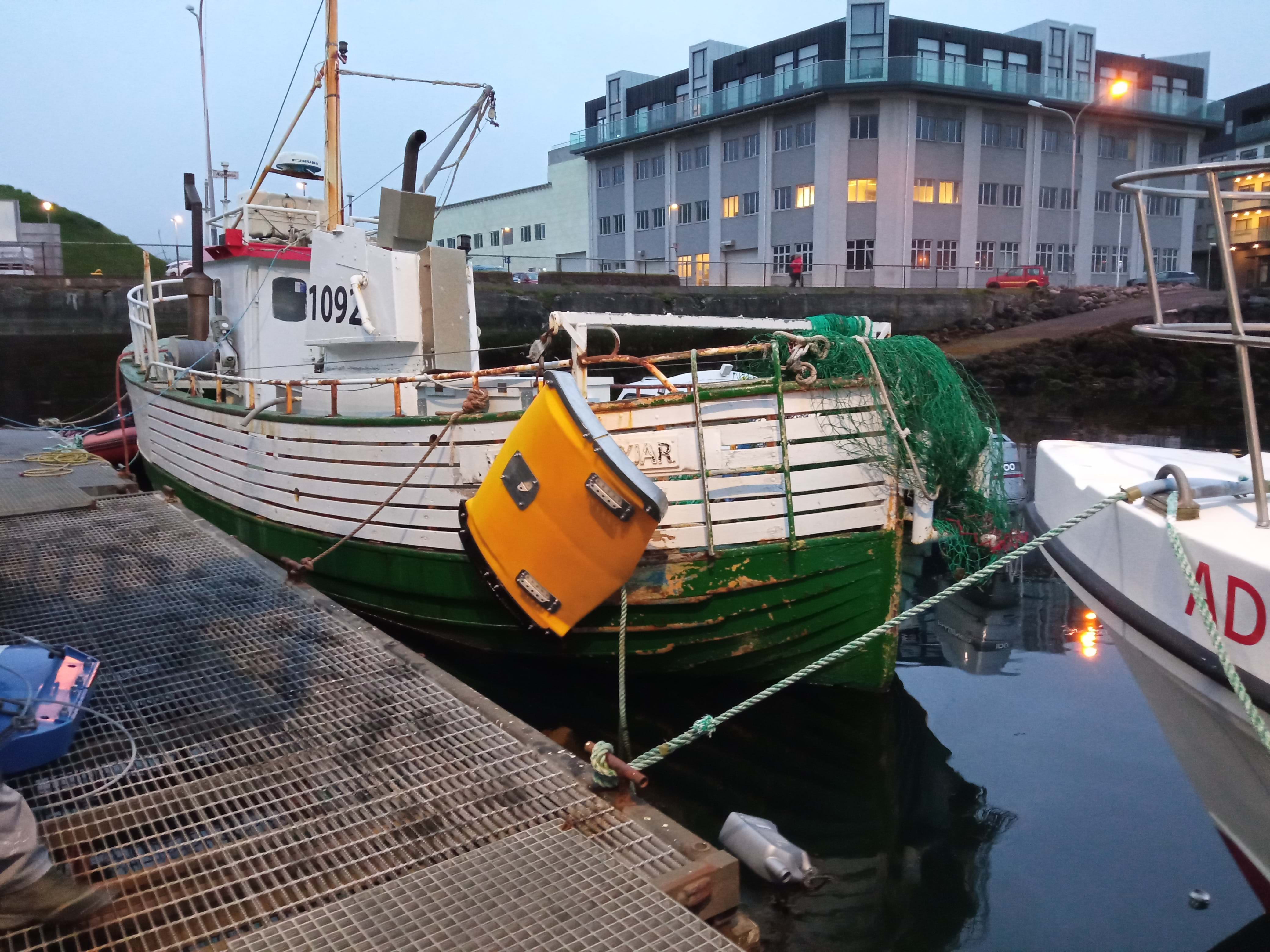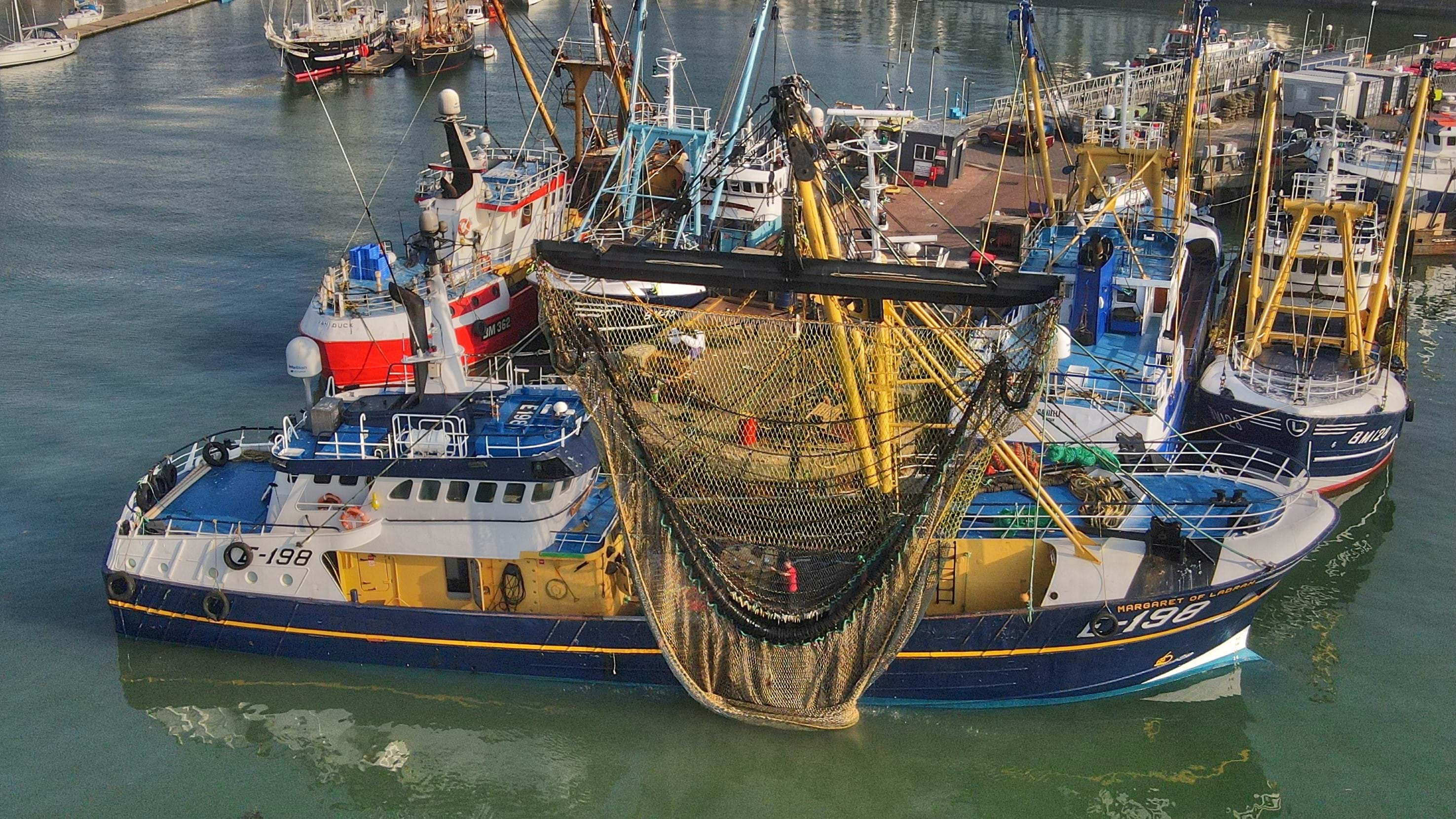How fishing gear design can help reduce carbon emissions
The way in which mobile fishing gears are designed can have a significant impact carbon emissions generated by the catching sector. Modern gears and fishing methods can help reduce vessel fuel consumption and help reduce seabed impacts.
One way of reducing greenhouse gas emissions from fishing vessels using mobile gears is to reduce the amount of drag caused by towing the fishing gear through the water. Gear technologists and fishers are already working together to design and test fishing gears that are more efficient.
Fuel consumption can be reduced by improving the hydrodynamic properties of fishing gear components, as seen in the development of new Pluto trawl doors by Polar Doors, or by minimising seabed contact as seen in the Sumwing beam trawl trials being carried out by Western FPO.
Pluto trawl doors from Polar Doors

Polar Doors, a fishing gear design company based in Iceland, has developed a new line of trawl doors which aim to utilise plastic waste, improve vessel fuel efficiency, and reduce the seabed impact of towed fishing gears. The newly designed ‘Pluto’ doors are the result of two years of research and development and are now being tested in Iceland, with UK trials planned for 2021 and 2022.
“Ideas around plastic trawl doors have been doing the rounds for 10 years, however with increased talk about plastic recycling we decided to revisit the topic,” explains Atli Már Jósafatsson, Managing Director at Polar Doors, “The development of our new Pluto doors has allowed us to tackle two key issues: utilising plastic waste and reducing the environmental impact of fishing.”
By using recycled plastic – some of which is sourced from Plastix, one of the leading recyclers of waste fishing gears in Europe – Pluto trawl doors can be rotationally moulded, a process which gives gear designers more opportunities to maximise their hydrodynamic shape and their in-water performance. Pluto doors are 20% lighter than the steel equivalent, however their hydrodynamic design is key to minimising the impact on the seabed.
“The shape of the doors means they are pulled down towards the seabed as the vessel tows rather than being weighted down,” says Atli, “This makes them much more efficient as they create less drag and means they can be fished semi-pelagically, even when targeting demersal whitefish.”
Fishing the trawl doors semi-pelagically – that is, raised slightly off seabed as opposed to scraping along the seabed – means that the drag of the gear is significantly reduced. Reducing drag improves fuel efficiency and minimises disturbance of seabed habitats. This is particularly important given the risk of releasing blue carbon which would otherwise remain stored in seabed sediments.
More information on semi-pelagic trawling for demersal species can be found in our Seafish Fishing Gear Database.
This type of development in gear technology shows the significant efforts being made by businesses to address the range of challenges now facing the seafood industry. Successful gear trials using Pluto doors have already been undertaken in Iceland and Polar Doors now aim to trial the gear in the UK over the next year.
“We are currently preparing three new sets of Pluto doors for trials in the UK,” says Atli, “Polar Doors will work closely with skippers and provide electronics to help assess the effectiveness of the new doors in practice.”
For more information on Pluto doors development please visit the Polar Doors website using the following link below.
Sumwing beam trawl trials by Western FPO

An important part of any fishing gear development is undertaking sea trials to observe how the gear works in practice. In autumn 2021 the beam trawler Margaret of Ladram, skippered by Adam Cowan-Dickie, trialled a Sumwing beam trawl to gather information on how the new gear impacts vessel fuel efficiency and catches compared to traditional gears.
The Margaret of Ladram works out of Brixham in the southwest of England, primarily targeting Dover sole, monkfish and turbot. These trials represent an important step in assessing how new fishing gear designs can be modified to suit the UK fishery.
“Sumwing beam trawls were developed in Holland but had not yet been tested in the UK fleet.” explains Chloe North, Manager of the Western Fish Producers Organisation, “We thought that there was potential to use Sumwing beam trawls in the UK but the gear had to be modified to suit our style of fishing; we use lower towing speeds than some European fisheries. The aim of our trial was to help determine if the gear could be adopted more widely, helping improve fuel efficiency across the fleet. This would in turn help reduce the sector’s carbon footprint.”
The Sumwing beam trawl replaces the traditional heavy beam with an air-filled, aerofoil shaped ‘wing’ to keep the net open. Unlike traditional beam trawls the Sumwing trawl does not have runners at each end of the beam which drag along the seabed, instead relying on one central skid and hydrodynamics to keep the net on the bottom whilst the Sumwing itself hovers around 600mm off the seabed.
A description and images of the Sumwing beam trawl can be found on the Seafish fishing gear database.
Sumwing beam trawls are generally at least 25% lighter than their traditional counterparts and cause significantly less drag as there is less contact between the gear and the seabed. In addition to improving fuel consumption the use of Sumwing beam trawls minimises disturbance of seabed sediments and habitats.
“Initial results from the trial showed a 42% saving in fuel. The results were so positive that the skipper continued using the gear after the trial and has reported on average a 30% fuel saving. We had expected to see a fuel saving of between 10-20% so this is a great outcome,” says Chloe, “At the moment fuel represents more than 22% of our vessel’s operating cost so this is a significant finding.”
Seafish economic analysis of trial data suggests that a typical southwest beam trawler, fishing for 200 days per year, could potentially save over £190,000 in fuel costs annually as a result of changing beam trawl gears.
“As well improved fuel efficiency the trial showed other benefits of reducing seabed contact,” explains Chloe, “We recorded a 69% reduction in benthic discards and we’ve seen less wear and tear on the gear which could double the lifespan of the trawls, meaning less waste is created.”
A technical report on the results of the WFPO Sumwing beam trawl trial is available on the following link below.
For more information on the Sumwing beam trawl trials visit the Western Fish Producers Organisation website, using the link below.